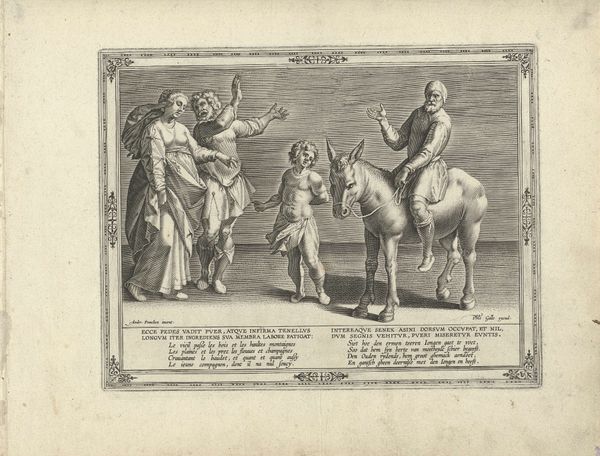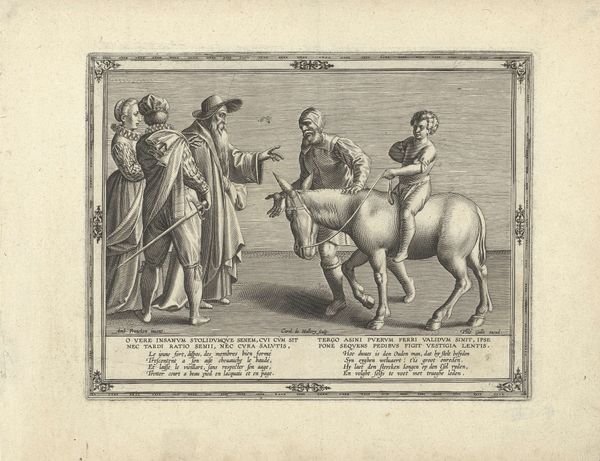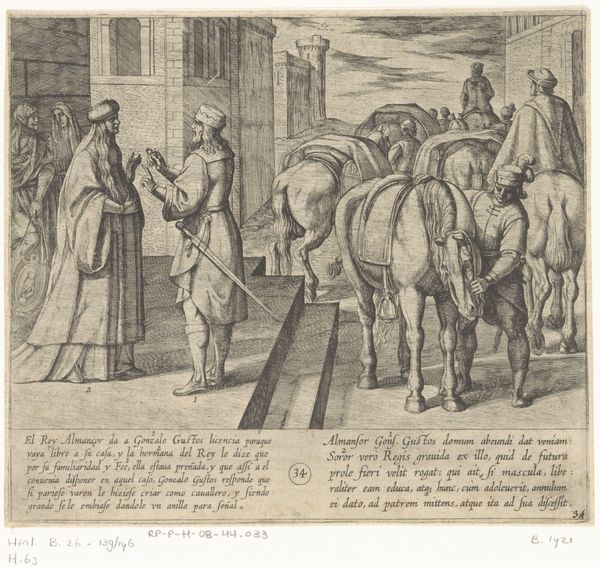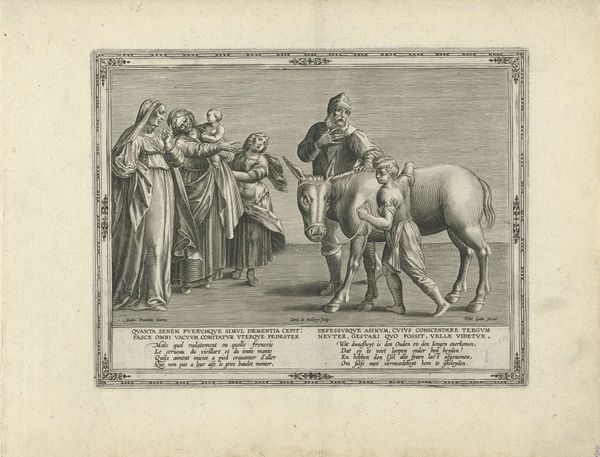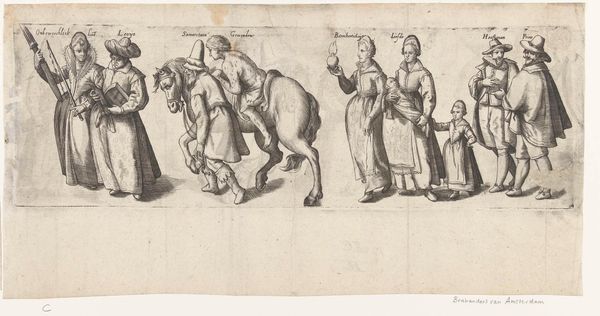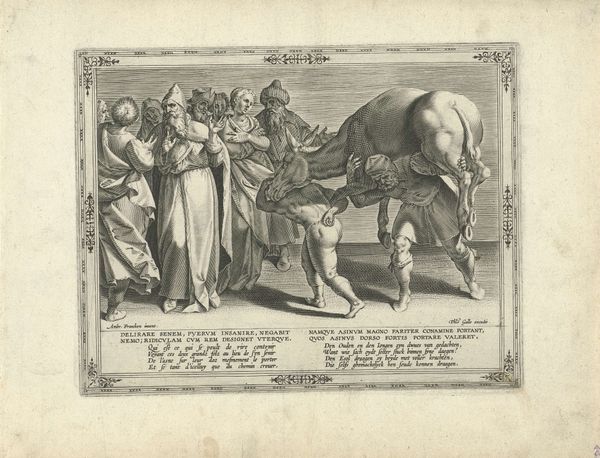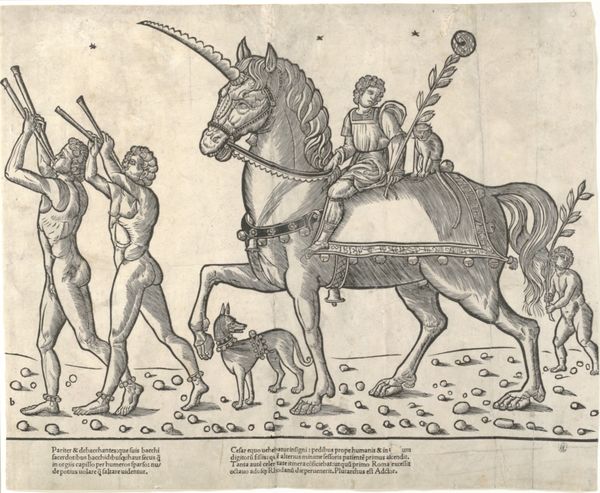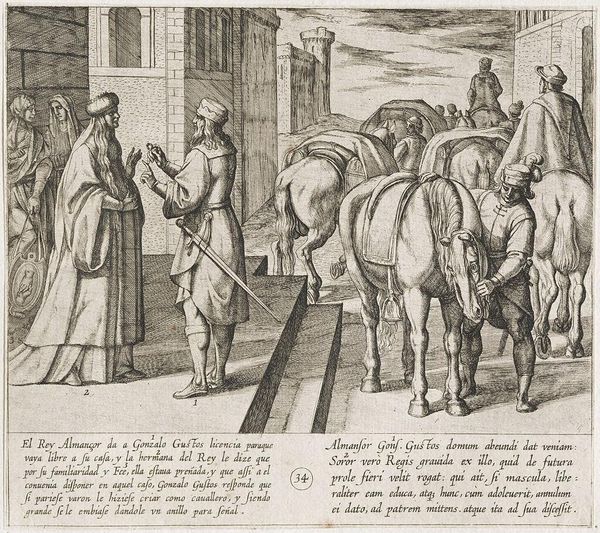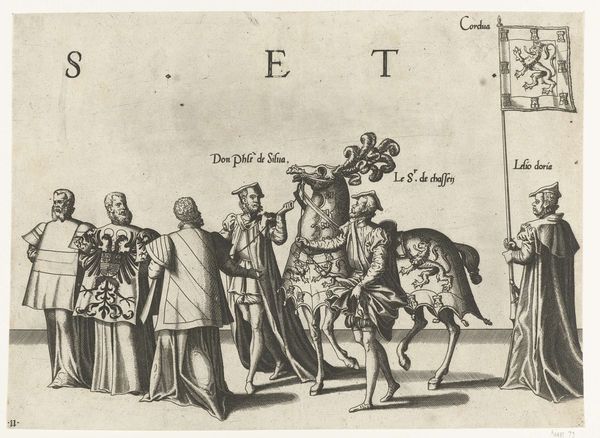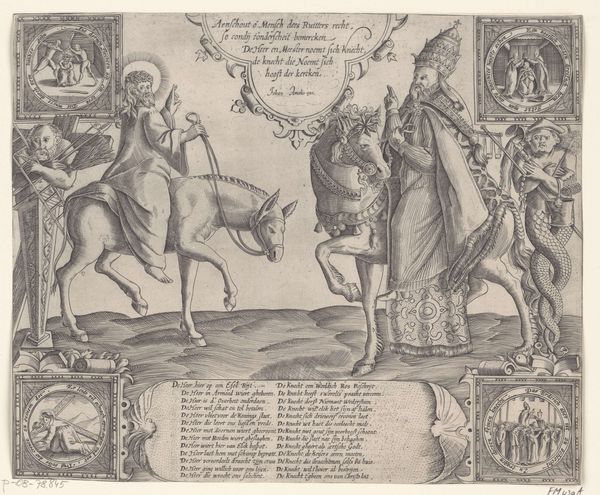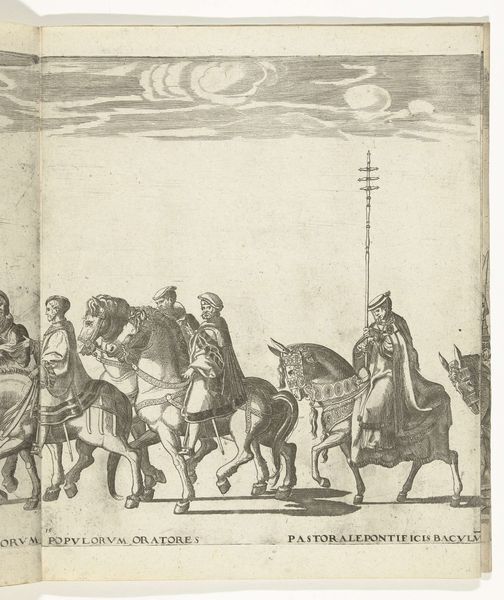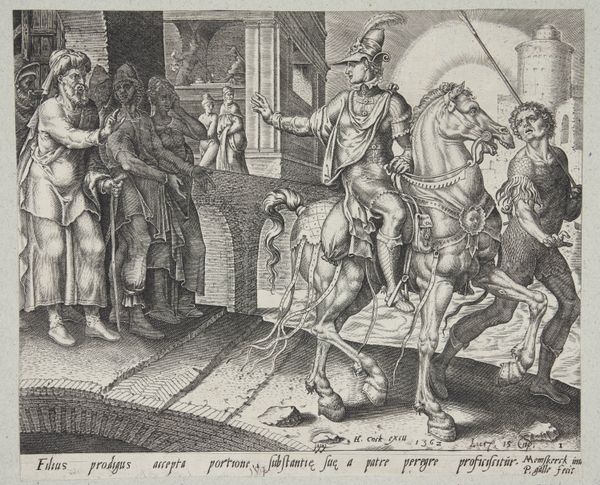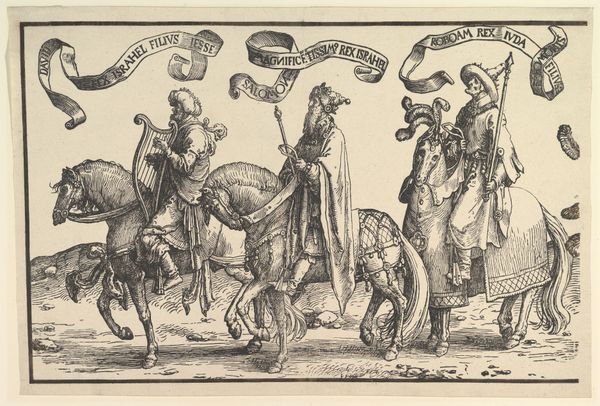
print, engraving
#
medieval
#
narrative-art
# print
#
old engraving style
#
mannerism
#
figuration
#
engraving
Dimensions: height 192 mm, width 245 mm
Copyright: Rijks Museum: Open Domain
This engraving, "Father and Son on the Back of a Donkey," was made around the turn of the 17th century by Karel van Mallery. The process of engraving, in which lines are incised into a metal plate and then printed, allows for a high level of detail. Here, it renders the scene with clarity, from the figures' expressions to the texture of their clothing. Engraving was essential for disseminating images widely in this period. But it was also labour-intensive, requiring skilled handwork. As a result, prints like this one circulated among a relatively elite audience, one capable of appreciating the refinement of the technique. The choice of subject matter is also significant. The image seems to be a moralizing commentary on family dynamics, or perhaps on social hierarchies. The very act of producing and consuming such images reinforced existing social structures. Ultimately, "Father and Son on the Back of a Donkey" invites us to consider the social context of both its creation and its reception, reminding us that all artworks are embedded in complex systems of labour, production, and meaning.
Comments
No comments
Be the first to comment and join the conversation on the ultimate creative platform.
